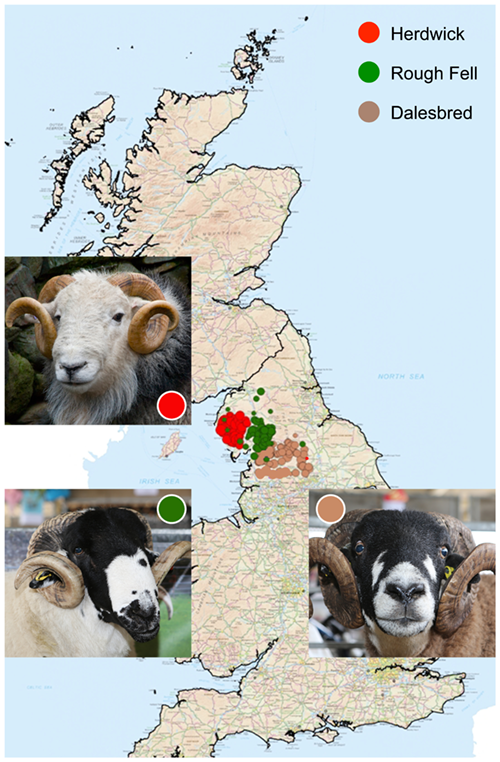The Sheep Trust successfully completed an initial study of genetic distinctiveness of three native hill breeds of the UK. The research was published in 2014 and formed the scientific basis for current projects.
The hill breeds of the northern uplands of the UK are farmed on areas designated as those Disadvantaged or Severely Disadvantaged for agricultural production. Each hill sheep breed is characterized by an ability to thrive in the harsh environments of mountains and moorlands, rearing lambs on low inputs of feed and management.
A significant issue for prioritising conservation strategies is whether the different breeds concentrated in proximate geographical regions and each locally adapted to similar environmental conditions are in fact genetically distinctive.
Distinctiveness would reveal the genetic resources held by each breed are different to one another and therefore offer unique traits and genes for mainstream agricultural use. This potential adds to the full ‘societal value’ offered by each breed - to their local cultural heritage, sustainability of their farmed environment and economy of their local communities.
The Sheep Trust selected three breeds from the northern English Uplands to explore the possibility of genetic distinctiveness. The Herdwick is an iconic image of the Lake District; Rough Fells are farmed in partially overlapping regions in Cumbria to the east of the Herdwicks and the distribution of the Dalesbred is to the south and further east into Lancashire and Yorkshire. In each region, the sheep breed continues to be valued for its cultural heritage and contribution to local sustainability.

Our results demonstrated a considerable level of genetic distinctiveness amongst the three breeds that can be readily distinguished from one another and other UK breeds studied previously.
A completely unique feature of the Herdwick compared with the other two upland breeds was the very high proportion of an R0 retrotype, previously suggested to be a feature of primitive ancient genomes, existing in the present day, but echoes of first migrations originating from the earliest occurrence of domesticated sheep.
Other breeds also exhibiting substantial levels of the R0 retrotype do exist – but none are located in the UK. Their occurrence breeds of Sweden (Rya, Gotland, Gute), Finland (Finnsheep, Kainuu Grey Sheep, Aland) and Iceland (Icelandic, Leader sheep) suggests Herdwicks may have originated from a common ancestral founder flock.